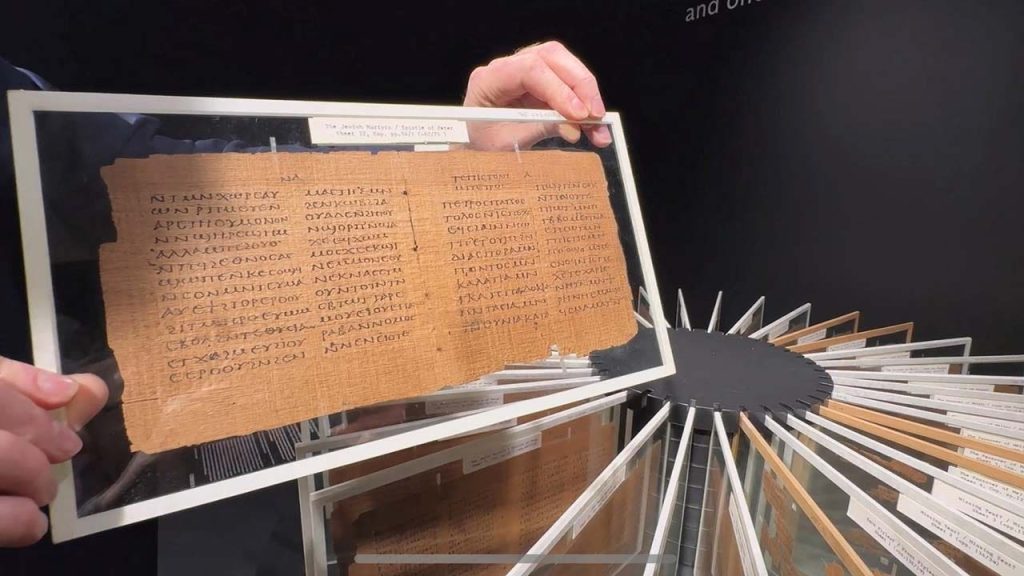The Crosby-Schøyen Codex, one of the oldest Christian liturgical books, is expected to fetch over $2.6 million at an auction in London. Written on Egyptian papyrus around 250-350 A.D., this codex was produced in one of the first monasteries during a transitional period when papyrus scrolls were transitioning into the codex form. It contains the earliest known texts of two books of the Bible, making it a significant historical and religious artifact. The book is expected to sell for between $2.6 million to $3.8 million, according to Christie’s New York.
One scribe worked on the Crosby-Schøyen Codex, writing 104 pages with 52 leaves over a period of 40 years. The book contains five texts, including portions of the Bible such as Jonah, 2 Maccabees 5:27 – 7:41, and 1 Peter, as well as writings by Melito of Sardis and an unidentified sermon for Easter morning. The codex was discovered in the 1950s and eventually acquired by the University of Mississippi before being purchased by Dr. Martin Schoyen, a manuscript collector, in 1988. It is now on display at Christie’s New York until April 9 before being auctioned in London on June 11.
The historical significance of the Crosby-Schøyen Codex lies in its early representation of books in the form we know today, as well as its inclusion of important religious texts. It offers insights into the practices of early monasteries and the transition to the codex, which became the standard format for books for centuries to come. The presence of early Biblical texts within the codex also adds to its importance as a religious artifact, providing a glimpse into the development and preservation of Christian scripture during its formative years.
The expected value of the Crosby-Schøyen Codex at over $2.6 million reflects the rarity and significance of this ancient manuscript. With its unique combination of historical, religious, and cultural value, the codex is likely to attract interest from collectors, historians, and institutions seeking to preserve and study such artifacts. The auction of the codex presents an opportunity for a new owner to acquire a piece of early Christian history and contribute to its continued preservation and study for future generations to come.
The upcoming auction of the Crosby-Schøyen Codex at Christie’s in London highlights the enduring fascination with rare historical manuscripts and artifacts. The interest in owning and studying such pieces reflects a broader cultural appreciation for the preservation of the past and the insights it can provide into human history and development. The high expected value of the codex underscores its importance as a rare and significant piece of early Christian literature, making it a prized possession for collectors and institutions alike.
Overall, the Crosby-Schøyen Codex represents a valuable and fascinating piece of early Christian and literary history. Its forthcoming auction is likely to generate significant interest from those interested in rare manuscripts, religious artifacts, and the preservation of cultural heritage. The codex’s unique combination of historical, religious, and cultural significance, along with its early representation of book format transitions, makes it a remarkable find that will no doubt continue to captivate scholars, collectors, and enthusiasts for years to come.


